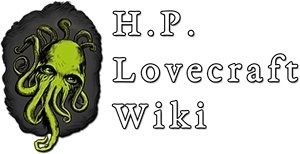No edit summary |
mNo edit summary |
||
| (3 intermediate revisions by 2 users not shown) | |||
| Line 1: | Line 1: | ||
| + | {{Infobox_writer |
||
| ⚫ | |||
| + | |image = 847A66C7-C446-48ED-939D-3FE969F6C58D.jpeg |
||
| + | |pseudonym = Francis Hard |
||
| + | |connection = Publisher |
||
| + | |birth_date = 29 July, 1888 |
||
| + | |birth_place = Santa Barbara, California, USA |
||
| + | |death_date = 12 June, 1940 |
||
| + | |death_place = Manhattan, New York, USA |
||
| + | |nationality = American |
||
| + | |genres = Fantasy |
||
| + | Pulp Fiction |
||
| + | |notableworks = Weird Tales|spouse = Marjorie J. Zinkie |
||
| + | |children = Robert Wright |
||
| + | }} |
||
| + | {{Realworld}} |
||
| ⚫ | |||
| ⚫ | Wright, a veteran of World War I, was working as a music critic for the Chicago Herald and Examiner when he began his association with Weird Tales, founded in 1923. At first serving as chief manuscript reader, he replaced founding editor [[Edwin Baird]] in 1924 when the latter was fired by publisher [[J. C. Henneberger]] |
||
| ⚫ | Wright, a veteran of World War I, was working as a music critic for the Chicago Herald and Examiner when he began his association with Weird Tales, founded in 1923. At first serving as chief manuscript reader, he replaced founding editor [[Edwin Baird]] in 1924 when the latter was fired by publisher [[J. C. Henneberger]]. |
||
| ⚫ | Wright's editorship of the magazine, which lasted until 1940, is considered the magazine's golden age, when it was regularly publishing such authors as [[H. P. Lovecraft]] |
||
| + | |||
| ⚫ | Wright's editorship of the magazine, which lasted until 1940, is considered the magazine's golden age, when it was regularly publishing such authors as [[H. P. Lovecraft]], [[Robert E. Howard]] and [[Clark Ashton Smith]]. Yet Wright had a strained relationship with all three writers, rejecting major works by them such as Lovecraft's [[At the Mountains of Madness]] and [[The Shadow Over Innsmouth]], Howard's "The Frost Giant's Daughter" and Smith's "The Seven Geases" (which Wright dismissed as just "one geas after another"). |
||
Wright (nicknamed "Plato" by his writers) was also noteworthy for starting the commercial careers of three important fantasy artists: Margaret Brundage, Virgil Finlay, and Hannes Bok. Each of the three made their first sale to, and had their work first appear in, Weird Tales. |
Wright (nicknamed "Plato" by his writers) was also noteworthy for starting the commercial careers of three important fantasy artists: Margaret Brundage, Virgil Finlay, and Hannes Bok. Each of the three made their first sale to, and had their work first appear in, Weird Tales. |
||
| − | Wright developed Parkinson's disease in 1921; by 1930, he was unable to sign his own letters. His failing health forced him to step down as editor in 1940, and he died later that year |
+ | Wright developed Parkinson's disease in 1921; by 1930, he was unable to sign his own letters. His failing health forced him to step down as editor in 1940, and he died later that year. |
| + | |||
{{Stub}} |
{{Stub}} |
||
{{DEFAULTSORT:Wright, Farnsworth}} |
{{DEFAULTSORT:Wright, Farnsworth}} |
||
| + | [[es:{{PAGENAME}}]] |
||
[[Category:Articles written on real-world topics]] |
[[Category:Articles written on real-world topics]] |
||
[[Category:Editors]] |
[[Category:Editors]] |
||
Revision as of 21:32, 5 December 2019
Farnsworth Wright (1888-1940) was the editor of the pulp magazine Weird Tales during the magazine's heyday.
Wright, a veteran of World War I, was working as a music critic for the Chicago Herald and Examiner when he began his association with Weird Tales, founded in 1923. At first serving as chief manuscript reader, he replaced founding editor Edwin Baird in 1924 when the latter was fired by publisher J. C. Henneberger.
Wright's editorship of the magazine, which lasted until 1940, is considered the magazine's golden age, when it was regularly publishing such authors as H. P. Lovecraft, Robert E. Howard and Clark Ashton Smith. Yet Wright had a strained relationship with all three writers, rejecting major works by them such as Lovecraft's At the Mountains of Madness and The Shadow Over Innsmouth, Howard's "The Frost Giant's Daughter" and Smith's "The Seven Geases" (which Wright dismissed as just "one geas after another").
Wright (nicknamed "Plato" by his writers) was also noteworthy for starting the commercial careers of three important fantasy artists: Margaret Brundage, Virgil Finlay, and Hannes Bok. Each of the three made their first sale to, and had their work first appear in, Weird Tales.
Wright developed Parkinson's disease in 1921; by 1930, he was unable to sign his own letters. His failing health forced him to step down as editor in 1940, and he died later that year.
